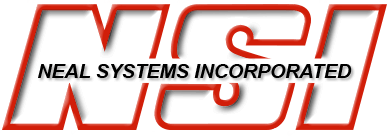White Paper for Draeger Safety
This page is tied to a virtual training presentation done between Steve Slavutsky of Draeger Safety and Shane Filer of Neal Systems. The training, developed from their 25 years of experience designing and troubleshooting gas leak and fire protection systems, discusses the five biggest mistakes that they have seen and what questions to ask in order to avoid those issues. The video is available on NSI’s Youtube channel.
Below are the five mistakes that Steve and Shane talked about, as well as the key questions that they would suggest you ask as part of the design process so as to avoid major issues later on.
Mistake #1: Not Properly Designing your Standard Operating Procedure
Questions to Ask:
1. Who has responsibility to write it?
2. Who will audit it to ensure that everything was covered?
3. Who all needs to evacuate, respond, or take action should a leakage or flame event occur?
4. How will those people be alerted – lights, horns, texts, emails, relay feed to security / fire panels?
5. How will people be regularly trained on following the SOP as far as their specific response?
6. What allows alarms to return to a state of normal? Consider a Cause and Effect Chart
Mistake #2: Not Recognizing When To Transition From Basic To Advanced Systems
Questions to Ask:
1. Do I know the rules that might govern this design? OSHA and NFPA are examples
2. Do I know the guides that have been created? ISA 84
3. How do I judge where to put the sensors, and how many to put in each area?
4. What sort of engineering standards or audits have been established by companies to help?
Mistake #3: Forgetting False Alarm Potentials
Questions to Ask:
1. For Gas Sensing, do you know all of the potential gases over the course of a month that could be around the sensing area, and does the sensor vendor have specifications and cross-gas interferences that you can evaluate?
2. For Flame Sensing, do I know all of the technology weak points that would cause a false alarm to occur?
3. Do I know the highs/lows of pressure, humidity and temperature that could be around the sensing area?
Mistake #4: Not understanding / training the necessary on-going preventative system maintenance to keep everything running?
Questions to Ask:
1. Do the design engineering and safety / EH&S teams collectively understand the manufacturer’s recommended preventative maintenance?
2. How often will the sensors and system be bump-tested, calibrated, and fully audited?
3. Does the maintenance person doing the testing / calibrating actually have training on the equipment in question by the manufacturer? Things like filter changes, sensors changes, optimal calibration interval, etc.
4. Who is responsible for documenting maintenance?
Mistake #5: When Portables and Fixed Systems Disagree – Who is right?
Questions to Ask:
1. Do I understand the purpose of each system?
2. How could the technologies respond differently?
3. Are both systems maintained optimally?
4. Has the SOP defined which one is the standard?
5. Has the SOP defined the exact procedure to follow when comparing the two?
6. Who wins between a portable from a first-responder (usually a local fire chief) vs a facility unit (usually handled by EH&S)?
